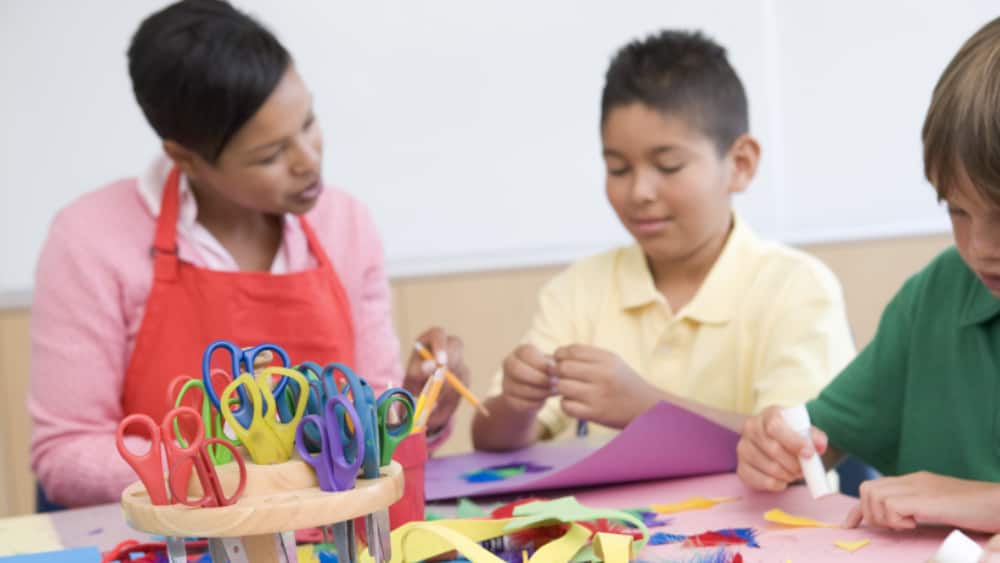Are you the parent of a neurodivergent child? If so, you might have asked yourself, “What can I do to better support them?”
Fortunately, you’ve landed in the right spot! The entire team at Jigsaw Training is dedicated to helping others become Registered Behavior Technicians (RBTs) – one of the most important roles in the world of Applied Behavior Analysis (ABA) due to their ability to help neurodivergent individuals grow.
Even if you’re not interested in becoming an RBT yourself, ABA principles can still help you better care for your child. So don’t let the fancy jargon intimidate you! Below, we’re breaking things down in a parent-friendly way.
But before we do, you might wonder what ABA has to do with parenting your kiddo. Whether it’s understanding their behaviors or learning new strategies to promote positive change, ABA is a game-changer when it comes to supporting your family. By learning more about ABA, you’ll be armed with the knowledge you need to help your child thrive.
So grab a cup of coffee (or tea, if that’s more your vibe), and let’s dive in!
What Is ABA?
We’ll kick things off with a question you might be asking: “What on earth is ABA anyway?”
ABA stands for Applied Behavior Analysis. But what does that actually mean? Think of it as a professional term for understanding how behavior works and using that understanding to make positive changes in people’s lives.
Now, let’s break it down a bit further. At its core, ABA is all about breaking behaviors down into smaller, manageable parts. It’s like solving a puzzle – you start with the pieces and figure out how they fit together until you’ve got the whole picture.
When it comes to ABA, one of the most important things to remember is that it’s not just about understanding behavior; it’s also about changing it for the better. That’s what RBTs and other ABA professionals do every day.
ABA Terminology Explained
Now let’s get into the actual terms! First up: reinforcement – the secret sauce to behavior change.
Positive Reinforcement
Positive reinforcement is about encouraging your kids whenever they do something awesome. Examples: giving them a high-five when they finish their veggies or slipping them a sticker for acing their spelling test. Positive reinforcement is all about adding something positive to increase the likelihood of a behavior happening again. It’s like saying, “Hey, you’re doing great – let’s keep it up!”
Negative Reinforcement
Next: negative reinforcement. Though it sounds (literally) negative, it doesn’t have to be intense! We’re not talking about scolding here. Far from it! Negative reinforcement is all about taking away something unpleasant to increase the chances of a positive behavior happening again. An example could be – your child kept their room clean all week, and in return, you got rid of their weekend chores. Negative reinforcement in action.
Extinction
Next up is extinction. And no, we’re not talking about dinosaurs! Extinction in ABA is all about withholding reinforcement to decrease a behavior. When a challenging behaviour that was previously reinforced stops getting reinforcement, it stops happening.
Chaining
Then, we’ve got Chaining. Imagine sculpting something out of clay – that’s chaining in a nutshell. It’s all about breaking down complex behaviors into smaller steps, teaching each step one at a time and then chaining them together. So, if you’re teaching your child to tie their shoes, you might start with simple tasks like picking up the laces and working your way up to the grand finale (that perfect bunny-eared bow).
Shaping
Next: There’s shaping. Shaping is akin to sculpting a beautiful art piece from a block of marble. Let’s look at using shaping to teach someone to say a word. Instead of expecting the perfect word right away, shaping involves rewarding incremental steps towards the desired word. For instance, when teaching a child to say the word “apple,” you might start by reinforcing any vocalization resembling “a,” then progress to sounds like “ap,” and finally shape it into the clear and accurate pronunciation of “apple.” Just like how an artist chisels away gradually to reveal the masterpiece within, shaping helps reveal the desired behavior step by step through reinforcement of successive approximations.
Prompting
Now, onto prompting, which is a gentle nudge in the right direction. Sometimes our kids need a little extra support to master a new skill, and that’s where prompting comes into play. Whether it’s a verbal cue, visual prompt, or helpful gesture, prompting helps guide children toward success one step at a time. For example, if you ask your child to pick up their fork and they don’t, you might show them how to do so by holding it yourself – and then asking them again.
Generalization
Next: generalization. Have you ever noticed how your child can ace a skill at home or school but struggle to use it elsewhere? That’s where generalization can help. It’s all about ensuring our kids can apply what they’ve learned in one setting to other situations, making those skills stick like glue. For example, if you teach a child to use an inside voice, they should practice that behavior in your house, a library, or a grocery store. In ABA, you
Maintenance
Maintenance comes next, which is often known as the secret to long-term success. Because it’s one thing to master a skill, but it’s another thing entirely to keep it up over time. Maintenance is all about ensuring those hard-earned behaviors continue, even after the initial excitement wears off. You can help to encourage this by changing the way you deliver reinforcement. For example, when teaching your child to raise their hand to get attention, you might start by praising them every time they do so (instead of when they speak out of turn). Later, you might provide reinforcement less often – perhaps every second time they raise their hand. Over time, you thin the schedule of reinforcement to what your child will typically encounter in the real-world.
Stimulus Control
Last but not least: stimulus control. Stimulus control is like a traffic light guiding drivers on when to stop and go. In ABA, we teach children (and adults) to recognize cues that signal when certain behaviors will be reinforced (or not). For instance, shouting to a friend in the playground might be okay, but not in a classroom. This skill can also help children respond differently to various questions or to know that it’s okay to hug family members but not strangers.
Understanding the principles of Applied Behavior Analysis (ABA) can be transformative for any parent, but especially if you are nurturing a neurodivergent child. The terms and concepts of ABA might seem daunting at first, but they are tools that can significantly improve both your life and your child’s by equipping you to support your child’s growth and development more effectively.
If you’re looking for more, you might consider becoming an RBT yourself. You can try out our Jigsaw Training online RBT course for free to get a feel for the training process. Our team is here to help you become a successful RBT so you can better care for those you love!









